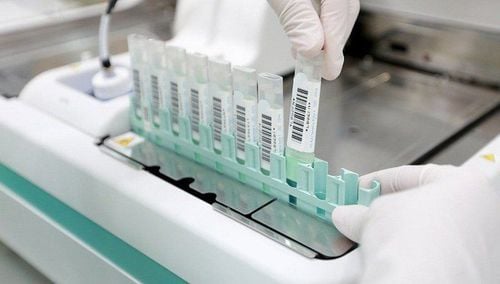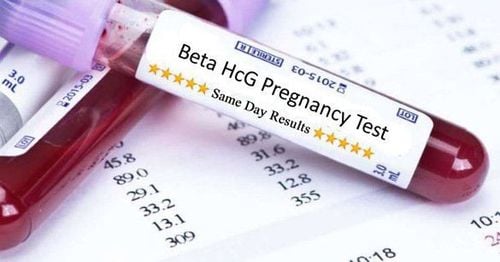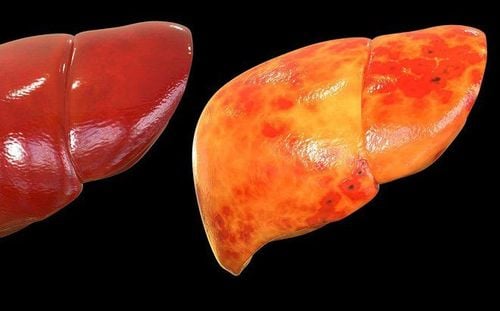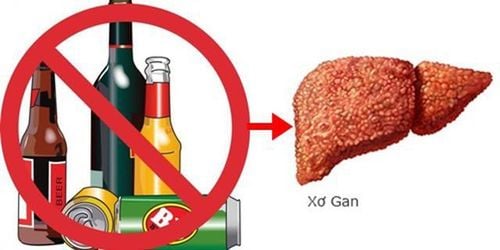This is an automatically translated article.
The article was written by a Doctor of Biochemistry - Laboratory Department - Vinmec Ha Long International HospitalRegular heavy drinking is harmful to the body, especially harmful to the liver. The test helps to assess the extent of liver damage / function and is a great support for monitoring the progress and results of alcohol cessation. The identification of alcoholic liver disease is based on two sources of information: evidence of excessive alcohol consumption and evidence of liver disease as demonstrated by laboratory/laboratory findings.
When you drink alcohol, alcohol is absorbed into the bloodstream from the stomach and intestines. All blood from the stomach and intestines passes through the liver before circulating into the body's general circulatory system. So the concentration of alcohol will be highest when the blood flows through the liver. Liver cells contain enzymes involved in alcohol metabolism.
These enzymes convert alcohol into water and carbon dioxide, which is then eliminated through urine and breath. Liver cells can only break down a certain amount of alcohol per hour. Drinking a small amount of alcohol (1-2 units/day) can be good for the heart (red wine). If the amount of alcohol consumed exceeds the working speed of the liver, the alcohol concentration in the blood increases and harms many organs / parts of the body, especially the liver.

Rượu làm ảnh hưởng nghiêm trọng đến chức năng gan
1. Alcoholic liver damage
The liver plays a very important role in the body because it performs many functions (Glycogen storage and blood glucose stabilization, fat and protein metabolism from food, production of proteins involved in the process. blood clotting (clotting factors), produces bile that goes to the intestines and helps digest fats, metabolize certain medications, and remove toxins including alcohol from the body.
Because it plays a major role in performing the task of eliminating “alcohol/alcohol” from the body, the liver is also the first affected organ when the body consumes excessive amounts of alcohol three types of liver damage caused by Alcohol has been mentioned include: fatty liver, hepatitis and cirrhosis. In heavy and frequent drinkers, these conditions can occur simultaneously in the same person.
1.1. Steatosis
In most people who regularly drink a lot of alcohol, there is a buildup of fat in the liver cells. Fatty liver is usually not serious and causes no symptoms, and usually clears up on its own if heavy drinking is stopped. However, some cases of fatty liver still progress and cause hepatitis when you stop taking or don't drink much anymore.
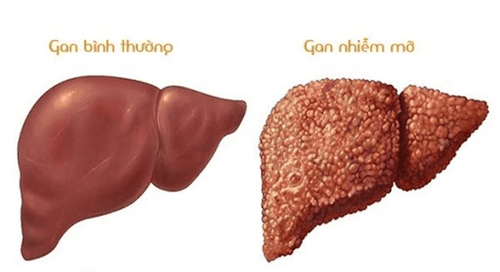
Gan nhiễm mỡ có thể gây ra nhiều biến chứng nguy hiểm
1.2. Alcoholic hepatitis
Is an inflammation of the liver cells that excrete alcohol. varying degrees of liver inflammation. Mild inflammation may not cause any clinical symptoms. May cause only liver enzyme abnormalities that are detected by blood tests.
More severe hepatitis can cause symptoms such as: nausea, fatigue, right upper abdominal pain, jaundice, yellow eyes. Laboratory tests showed an increase in bilirubin levels.
Fulminant alcoholic hepatitis can rapidly lead to liver failure. Manifestations of severe jaundice, coagulopathy, confusion, coma and gastrointestinal bleeding. Usually fatal.
1.3. Cirrhosis due to alcohol
Alcoholic cirrhosis has been and is one of the causes of cirrhosis. About 1 in 10 heavy drinkers will eventually develop cirrhosis. Cirrhosis usually occurs after more than 10 years of heavy drinking. In heavy drinkers, cirrhosis can develop after episodes of alcoholic hepatitis, but there are also cases of cirrhosis without alcoholic hepatitis being detected before.
It is still not explained why some people's liver cells are susceptible to alcohol damage and are prone to progress to hepatitis or cirrhosis. But the more and more often you drink alcohol, the greater your risk of developing hepatitis and/or cirrhosis.
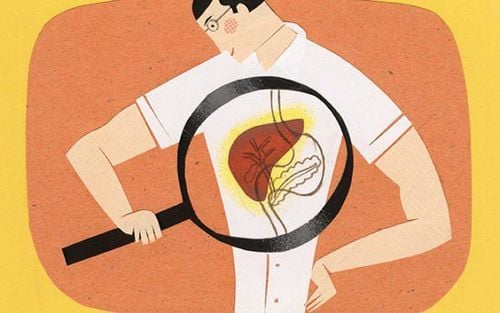
Rượu là nguyên nhân chính gây xơ gan
2. Significance of diagnostic tests for alcoholic liver disease
First, it is important to know that there is no single test that is known to be specific for diagnosing alcoholic liver disease. It is important that people who have had a long history of heavy drinking or are experiencing health abnormalities that are suspected to be alcohol can use the following investigations or tests to assess and monitor their condition: liver.2.1. Tests to assess liver function/alcohol damage
Measure activity GOT, GPT Transaminase enzymes (AST/GOT, ALT/GPT ) are abundant in the liver and also present in cells of other tissues. Damage to the liver, regardless of the cause, increases transaminases. However, transaminase activity is usually only moderately elevated and rarely more than 4 times the upper limit of normal. At the same time, the ratio of GOT/GPT enzyme activity has been shown to be significant in differentiating the cause of liver injury.
Increased transaminase and GOT/GPT ratio: >2 suggest alcoholic liver injury;
< 1 suggests nonalcoholic liver injury.
Measurement of Gamma-glutamyl transpeptidase (GGT) activity is increased in biliary obstruction and excessive alcohol consumption. Also about a third of heavy drinkers were found to have no increase in GGT activity.
GGT activity is also increased in some liver related diseases, taking certain drugs and extrahepatic diseases such as pneumonia and pancreatitis, obesity and the elderly. GGT is not a specific test for the diagnosis of alcohol abuse, however, GGT activity is widely used as a marker in conjunction with alcohol history to assess alcohol abuse.
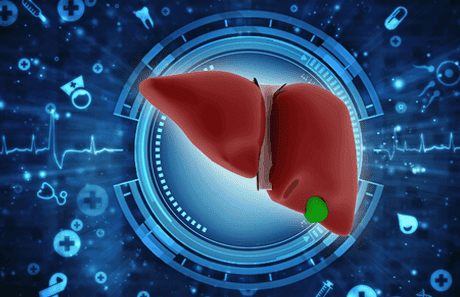
Đo hoạt độ GGT giúp đánh giá chức năng /tổn thương gan do rượu
Often, continuous heavy drinking leads to an increase in GGT, whereas a single episode of heavy drinking does not increase GGT. A 2-4-fold increase in GGT is commonly seen in heavy drinkers, but a 20-fold increase in normal levels can be seen. In cases of increased GGT due to excessive alcohol consumption, GGT activity usually returns to normal when alcohol cessation is ≥ 3 months (unless there is other pre-existing liver disease).
Quantification of blood albumin: blood albumin levels are often low, reflecting poor liver synthesis function. Low blood albumin may also be a combination of poor nutritional status/absorption. Coagulation tests: PT (prothrombin) time, INR is increased, reflecting poor liver synthesis function. Quantification of blood Bilirubin: in alcoholic liver disease Bilirubin is increased due to obstruction of the biliary tract (due to inflammation causing edema or fibrosis causing narrowing of the biliary tract). A complete blood count may show a decrease in the number of blood cells (white blood cells, platelets, red blood cells). Some other biochemical tests can be used to coordinate the assessment such as alkaline phosphatase (ALP), lactate dehydrogenase (LDH),...
2.2. Imaging (ultrasound or computed tomography/magnetic resonance imaging) to evaluate liver damage (regardless of alcohol or other causes)
Ultrasound helps to rule out biliary obstruction or to evaluate clinical potential ascites. Computed tomography (CT scan) with intravenous contrast or MRI may be indicated in selected cases to evaluate patients with collateral, space-occupying lesions of the liver. or comorbidity of the pancreas
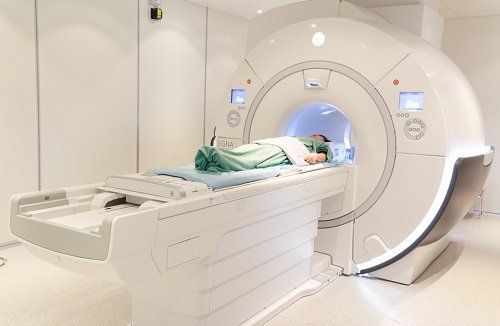
Có thể chẩn đoán bệnh lý về gan do rượu thông qua chụp MRI
2.3. Liver biopsy
2.4. Esophageal endoscopy to check for esophageal varices (a consequence of cirrhosis)
Vinmec International General Hospital is one of the hospitals that not only ensures professional quality with a team of doctors, modern equipment and technology. The hospital provides comprehensive, professional medical examination, consultation and treatment services, civilized, polite, safe and maximum sterilization space. Customers when choosing to perform tests here can be completely assured of the accuracy of test results.
Please dial HOTLINE for more information or register for an appointment HERE. Download MyVinmec app to make appointments faster and to manage your bookings easily.





